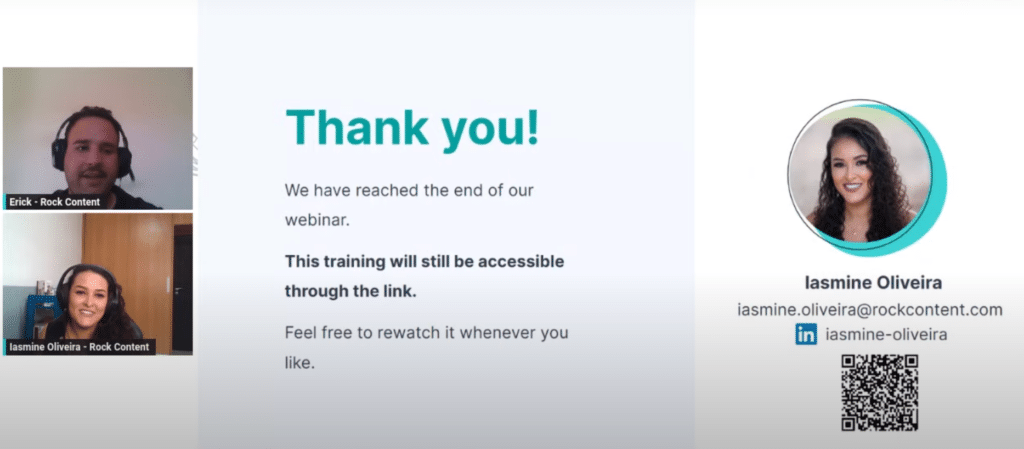Are your products and services valuable to other businesses and organizations looking to improve their operations, produce their goods, and resolve key challenges?
If so, you need a great B2B content marketing strategy. You must speak business to business (B2B) while placing your content where key stakeholders will see it early and often.
Miss the mark and your marketing approach may fail to resonate with business stakeholders, allowing your competitors to swoop in and land the sale.
Fortunately, creating a B2B content marketing plan is not rocket science.
You just have to set up your strategy by following the best practices, and then adjust your approach to better align your plan with your target audience’s needs.
Ready to get started? Just follow this how-to guide on building a successful B2B content marketing strategy.
- Keys to a Successful B2B Content Marketing Strategy
- Business to Consumer (B2C) vs B2B Content Marketing
- Key Steps to Creating a Content Marketing Strategy for B2B
- Ready to Create Your B2B Content Marketing Strategy?
Keys to a Successful B2B Content Marketing Strategy
A successful content marketing strategy centers around creating content that speaks to the needs, challenges, and goals of each organization.
After that, it’s just a matter of getting the content in front of your audience at all the right moments.
Sounds simple enough, right? When you follow the right steps, it is.
With the right approach, the process will look a little something like this:
- Learn all about your customer’s pain points and goals in growing their business
- Figure out what types of content they prefer when making buying decisions
- Find where they spend the bulk of their time online, especially during the workday
- Build a B2B marketing calendar full of great content and target key distribution channels
- Create content briefs, and then produce the content as needed to hit all the deadlines
- Distribute and promote your content to keep it in front of key stakeholders
- Set performance goals and track all your key performance indicators (KPIs)
At the end of each quarter, use your KPIs to revise your B2B content marketing strategy. Even when you do everything right from the start, expect the wins to trickle in slowly.
With B2B content marketing, you have to play the long game. So, ditch the unrealistic expectations and just focus on following the plan.
Business to Consumer (B2C) vs B2B Content Marketing
Although the line between B2B and B2C content has started to blur recently, there are still many key differences, including:
- Stakeholders: Unlike consumer sales, business purchases rarely go through one person. Instead, the company often takes a collaborative approach to find solutions, resulting in the need to engage all the key stakeholders.
- Value Proposition: Businesses don’t act on impulse in making purchase decisions. They weigh the value of all the solutions to find the ones that’ll provide the best results. So, you must appeal to them with proof of how well your solutions work, preferably with stats, facts, and graphs.
- Brand Voice: B2C marketing allows you to put a ton of personality into your brand voice as you seek to make a one-to-one connection with your customers. With B2B, your brand voice must take a serious turn, reflecting how you would speak with a committee of stakeholders in a professional setting.
Keep all these differences between B2C and B2B content marketing in mind as you create and follow your plan to get great results every step of the way.
Key Steps to Creating a Content Marketing Strategy for B2B
If you’re ready to create your B2B content marketing strategy, simply follow these seven steps.
1. Define Your Target Audience
As with all good marketing plans, you must define your target audience. Start by identifying the types of businesses and organizations that can benefit from your products and services.
Then, perform B2B market research to figure out their:
- Key stakeholders
- Pain points
- Current solutions
- Business goals
Use the data to build a buyer persona for each type of business you’ll serve.
Then, bring it full circle by reflecting on how your offerings can make the stakeholders’ lives easier while boosting business growth and revenues.
2. Identify the Best Content Types and Formats
B2B content must highlight the value of your products and services while keeping the business engaged through the decision-making process.
For that reason, it’s often best to diversify when it comes to types of content. You should regularly roll out:
- eBooks
- Long-form articles
- Case studies
- Whitepapers
- Emails
- Webinars
- Podcasts
You’ll also want to use social media posts to promote your content and keep it in front of all the stakeholders.

3. Figure Out the Best Marketing Channels
To regularly engage with your target audience, you must keep your content constantly flowing through all the top B2B channels.
Start by creating eBooks, case studies, white papers, and other content for your website. Set up gated landing pages that allow you to give away your most valuable content in exchange for your customers’ content info.
Use the contact info to send out emails directing your customers to webinars, podcasts, guest posts, and the like. Also, create email newsletters highlighting all the leading solutions for each company on your list.
Publish long-form articles on LinkedIn as well to help establish your brand as a thought leader in the industry. Promote existing content on LinkedIn, too, keeping your brand at the forefront of stakeholders’ minds as they make purchase decisions.
4. Build a B2B Content Marketing Calendar
B2B content marketing is all about consistency. So, to ensure you’re always writing, publishing, and promoting on schedule, create a content marketing calendar. Set up a spreadsheet for each quarter, and then start filling in the blanks.
For each piece of content, define the:
- Topic
- Main keyword
- Internal and external links
- Distribution channel
- Promotion plans
- Assigned writer
- Publishing deadline
- Collaborators
Add any image, video, or podcast links you’ll want to include on that page as well.
5. Create Content Briefs – and Start Writing
Use the info in the content calendar to build out detailed content briefs. Add all the most important subheadings to include in the content as well.
In the end, the brief should have all the info you need to craft effective content that speaks to the needs of your customers.
Although you can produce the content yourself, it’s often best to build a team of writers. That way, you can rest assured that you won’t miss any deadlines along the way.
6. Distribute and Promote Your Content
As the content comes your way, review each piece, and then distribute it as planned. You’ll want to begin by publishing the content where it will live online forevermore.
Then, start promoting your content by creating social media posts on LinkedIn, Twitter, and Facebook. Don’t just promote your content once and forget about it either.
B2B content must land in front of the stakeholders, again and again, to keep your brand relevant through the purchase cycle.
Remember to tag any collaborators who helped bring the content to life, so they can promote it as well.
7. Set Performance Goals and Track KPIs
Unless you end up swamped with customers from the start, you don’t know how effective your B2B content marketing strategy is at a glance.
Instead, you have to measure it using KPIs, like:
- Website visitors
- Time on page
- Landing page conversions
- Social media engagements
- Qualified lead acquisition
- Customer acquisition cost
Once you have your ideal KPIs in mind, set goals, and then track your marketing performance.
You can then use the KPI data to adjust your marketing approach each quarter. Over time, you’ll dial in your efforts to best match the needs of your customers, resulting in the growth of your own business.
Ready to Create Your B2B Content Marketing Strategy?
Creating an excellent B2B content marketing strategy is doable on your own. But that doesn’t mean it’s not time-consuming.
Fortunately, you can get the help you need by partnering with our team at WriterAccess. Our content strategists and writers have just what it takes to get your B2B marketing program up to speed.
We invite you to get started today by signing up for our 14-day free trial. Upon doing so, you’ll get to explore all our content marketing solutions and see how they can help promote the success of your brand.








